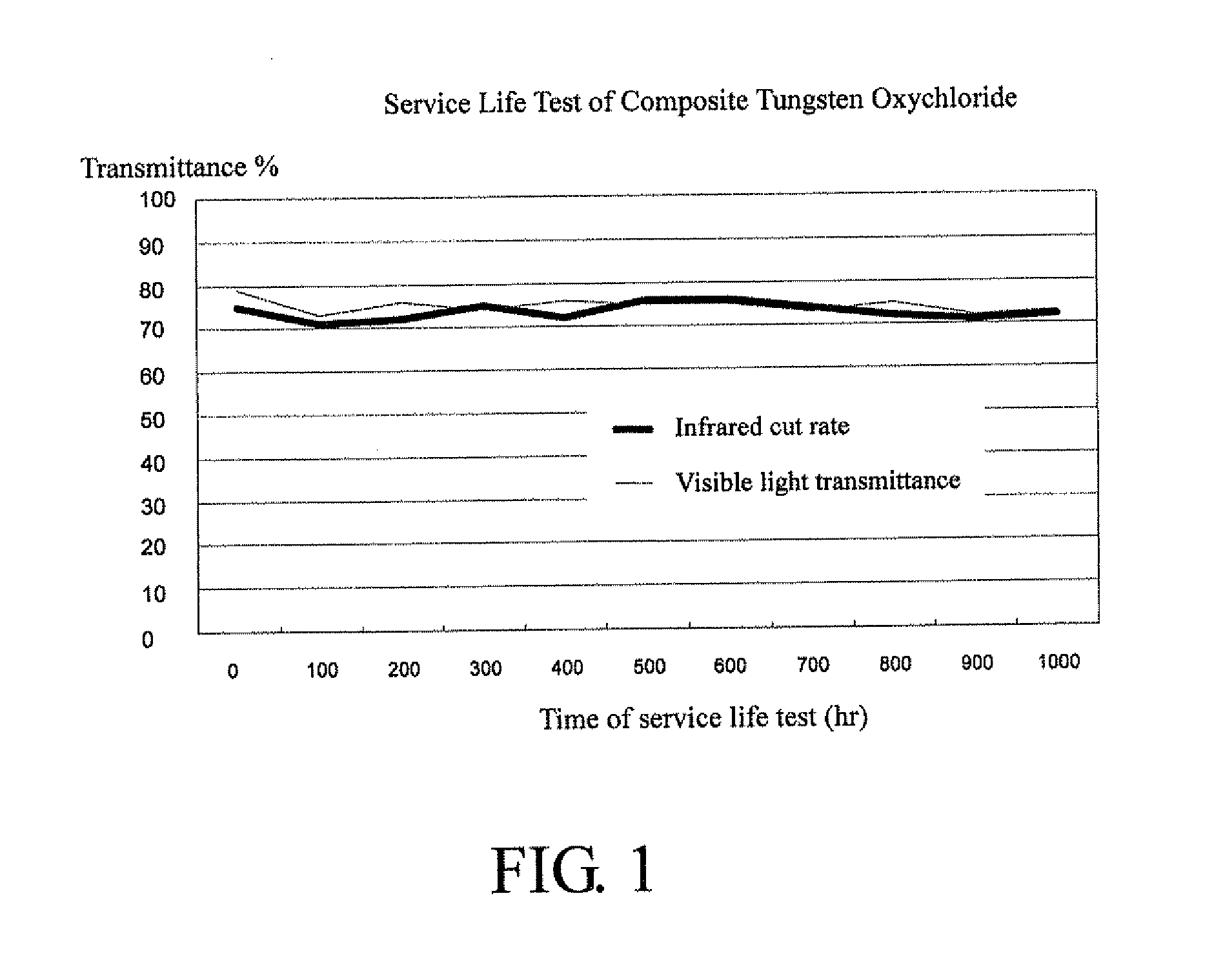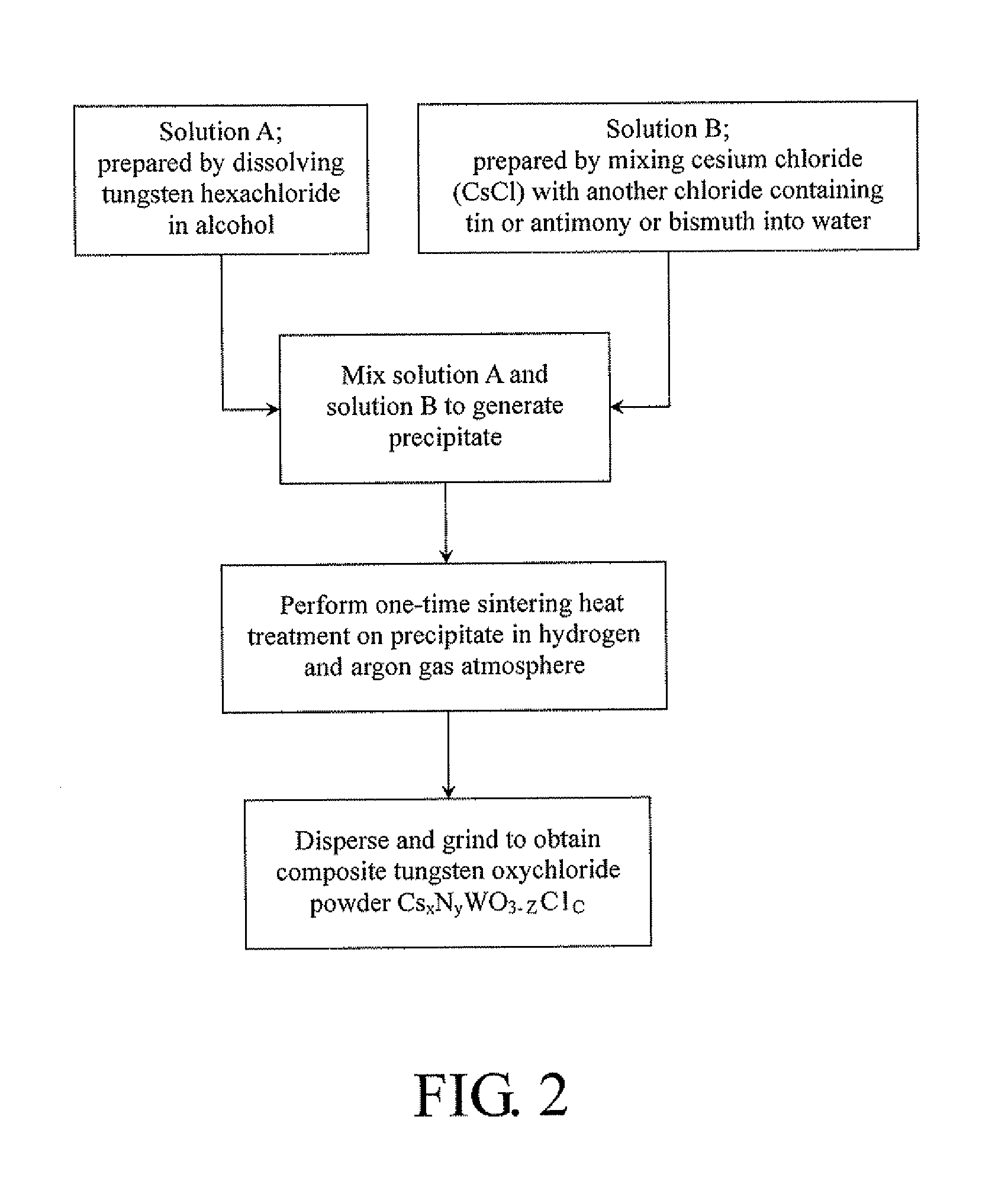Transparent heat-shielding material excellent in infrared-blocking properties and transparent heat-shielding film made of the same
- Summary
- Abstract
- Description
- Claims
- Application Information
AI Technical Summary
Benefits of technology
Problems solved by technology
Method used
Image
Examples
embodiment 1
[0064]Tungsten hexachloride is mixed with alcohol to produce a blue solution A with a pH value of about 0. Cesium chloride (CsCl) and antimony trichloride (SbCl3) are mixed with water, with the ratio of cesium chloride (CsCl) to antimony trichloride (SbCl3) being 1 mole to 0.1 mole; thus, a transparent solution B is produced. The two solutions A and B are co-deposited to generate a precipitate. The chemical reaction formulas involved are as follows:
2WCl6+C2H5OH+3H2O→WOCl4↓WO2Cl2↓+6HCl+C2H5OH;
WOCl4↓+WO2Cl2↓+C2H5OH+CsCl+SbCl3+3H2O→2WO3↓+Cs++Sb+3+Cl−+6HCl+C2H5OH.
[0065]Following that, the precipitate is put into a high-temperature furnace into which argon gas and hydrogen gas are supplied at a specific flow rate. The temperature of the high-temperature furnace is increased from room temperature to 485-515° C. (the average temperature being 500° C.) at a temperature rising rate of 2° C. per minute, and the heat treatment continues for one hour.
[0066]After the heat treatment, a composite ...
embodiment 2
[0069]This embodiment is similar to embodiment 1 except that, when cesium chloride and antimony trichloride (SbCl3) are mixed with water to produce the transparent solution B, the ratio of cesium chloride to antimony trichloride (SbCl3) is 1 mole to 0.5 mole.
[0070]The transmittance of 300-2000-nm radiation through the resultant transparent heat-shielding film is tested, and the results are shown in Table 1.
embodiment 3
[0071]This embodiment is similar to embodiment 2 except that tin trichloride (SnCl3) is used in place of antimony trichloride (SbCl3) in preparation of the transparent solution B.
[0072]The transmittance of 300-2000-nm radiation through the resultant transparent heat-shielding film is tested, and the results are shown in Table 1. In addition, the results of the service life test are plotted in FIG. 1.
PUM
| Property | Measurement | Unit |
|---|---|---|
| Nanoscale particle size | aaaaa | aaaaa |
| Wavelength | aaaaa | aaaaa |
| Wavelength | aaaaa | aaaaa |
Abstract
Description
Claims
Application Information
 Login to View More
Login to View More - R&D
- Intellectual Property
- Life Sciences
- Materials
- Tech Scout
- Unparalleled Data Quality
- Higher Quality Content
- 60% Fewer Hallucinations
Browse by: Latest US Patents, China's latest patents, Technical Efficacy Thesaurus, Application Domain, Technology Topic, Popular Technical Reports.
© 2025 PatSnap. All rights reserved.Legal|Privacy policy|Modern Slavery Act Transparency Statement|Sitemap|About US| Contact US: help@patsnap.com



